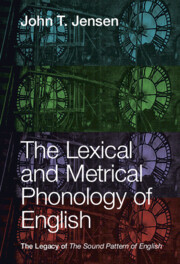146 results
Intermittent cell division dynamics in regenerating Arabidopsis roots reveals complex long-range interactions
-
- Journal:
- Quantitative Plant Biology / Volume 5 / 2024
- Published online by Cambridge University Press:
- 04 September 2024, e7
-
- Article
-
- You have access
- Open access
- HTML
- Export citation
Associations between psychosocial work environment factors and first-time and recurrent treatment for depression: a prospective cohort study of 24,226 employees
-
- Journal:
- Epidemiology and Psychiatric Sciences / Volume 33 / 2024
- Published online by Cambridge University Press:
- 18 March 2024, e13
-
- Article
-
- You have access
- Open access
- HTML
- Export citation
A mixed-methods investigation into impact of motivation type on adherence and effect in iCBT for binge eating disorder
-
- Journal:
- European Psychiatry / Volume 66 / Issue S1 / March 2023
- Published online by Cambridge University Press:
- 19 July 2023, p. S461
-
- Article
-
- You have access
- Open access
- Export citation
Behavioural differences between weaner pigs with intact and docked tails
-
- Journal:
- Animal Welfare / Volume 25 / Issue 2 / May 2016
- Published online by Cambridge University Press:
- 01 January 2023, pp. 287-296
-
- Article
-
- You have access
- Export citation
11 - Digital Media in Adolescent Health Risk and Externalizing Behaviors
- from Part III - Digital Media and Adolescent Mental Disorders
-
-
- Book:
- Handbook of Adolescent Digital Media Use and Mental Health
- Published online:
- 30 June 2022
- Print publication:
- 14 July 2022, pp 264-299
-
- Chapter
-
- You have access
- Open access
- HTML
- Export citation
Index
-
- Book:
- The Lexical and Metrical Phonology of English
- Published online:
- 18 June 2022
- Print publication:
- 26 May 2022, pp 375-380
-
- Chapter
- Export citation
Chapter 5 - Prosodic Phonology
-
- Book:
- The Lexical and Metrical Phonology of English
- Published online:
- 18 June 2022
- Print publication:
- 26 May 2022, pp 184-234
-
- Chapter
- Export citation
Chapter 1 - Theories of Phonology
-
- Book:
- The Lexical and Metrical Phonology of English
- Published online:
- 18 June 2022
- Print publication:
- 26 May 2022, pp 1-51
-
- Chapter
- Export citation
References
-
- Book:
- The Lexical and Metrical Phonology of English
- Published online:
- 18 June 2022
- Print publication:
- 26 May 2022, pp 366-374
-
- Chapter
- Export citation
Chapter 6 - Lexical Phonology: The Cyclic Rules
-
- Book:
- The Lexical and Metrical Phonology of English
- Published online:
- 18 June 2022
- Print publication:
- 26 May 2022, pp 235-273
-
- Chapter
- Export citation

The Lexical and Metrical Phonology of English
- The Legacy of the Sound Pattern of English
-
- Published online:
- 18 June 2022
- Print publication:
- 26 May 2022
Figures
-
- Book:
- The Lexical and Metrical Phonology of English
- Published online:
- 18 June 2022
- Print publication:
- 26 May 2022, pp ix-x
-
- Chapter
- Export citation
Chapter 4 - English Stress
-
- Book:
- The Lexical and Metrical Phonology of English
- Published online:
- 18 June 2022
- Print publication:
- 26 May 2022, pp 125-183
-
- Chapter
- Export citation
Chapter 7 - Word-Level Phonology
-
- Book:
- The Lexical and Metrical Phonology of English
- Published online:
- 18 June 2022
- Print publication:
- 26 May 2022, pp 274-316
-
- Chapter
- Export citation
Preface
-
- Book:
- The Lexical and Metrical Phonology of English
- Published online:
- 18 June 2022
- Print publication:
- 26 May 2022, pp xi-xvi
-
- Chapter
- Export citation
Chapter 2 - Segmental Phonology
-
- Book:
- The Lexical and Metrical Phonology of English
- Published online:
- 18 June 2022
- Print publication:
- 26 May 2022, pp 52-78
-
- Chapter
- Export citation
Copyright page
-
- Book:
- The Lexical and Metrical Phonology of English
- Published online:
- 18 June 2022
- Print publication:
- 26 May 2022, pp iv-iv
-
- Chapter
- Export citation
Contents
-
- Book:
- The Lexical and Metrical Phonology of English
- Published online:
- 18 June 2022
- Print publication:
- 26 May 2022, pp v-viii
-
- Chapter
- Export citation
Chapter 8 - Further Issues in Phonological Theory
-
- Book:
- The Lexical and Metrical Phonology of English
- Published online:
- 18 June 2022
- Print publication:
- 26 May 2022, pp 317-365
-
- Chapter
- Export citation
Chapter 3 - Syllables and Moras
-
- Book:
- The Lexical and Metrical Phonology of English
- Published online:
- 18 June 2022
- Print publication:
- 26 May 2022, pp 79-124
-
- Chapter
- Export citation

